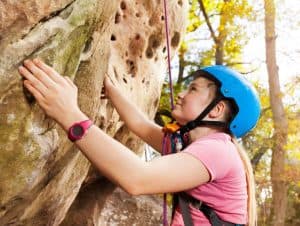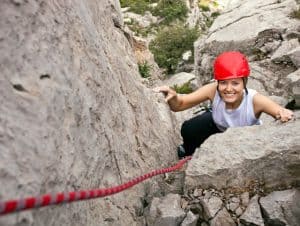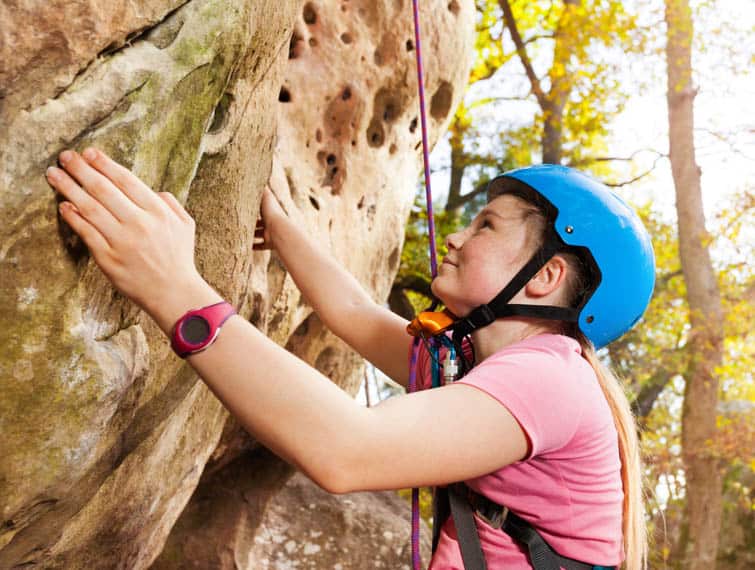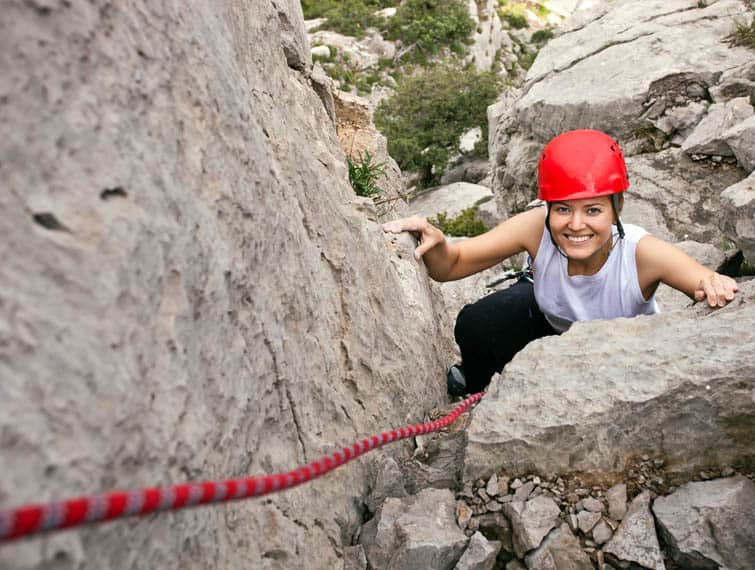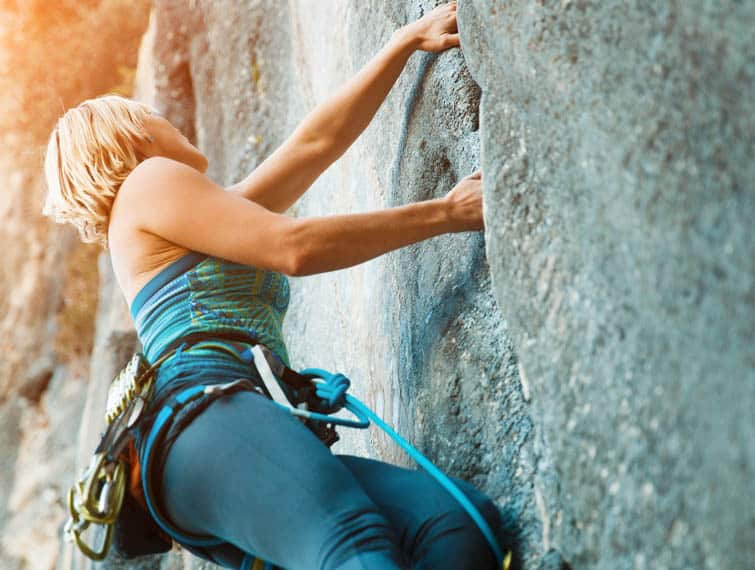Rock climbing can be intimidating at first, especially when you are a beginner without a clue about the rock climbing basics. Before daring to try the sport, whether indoor or outdoor, you have to equip yourself not only with proper clothing and rock climbing gear but a lot of knowledge about what you’d be getting into.
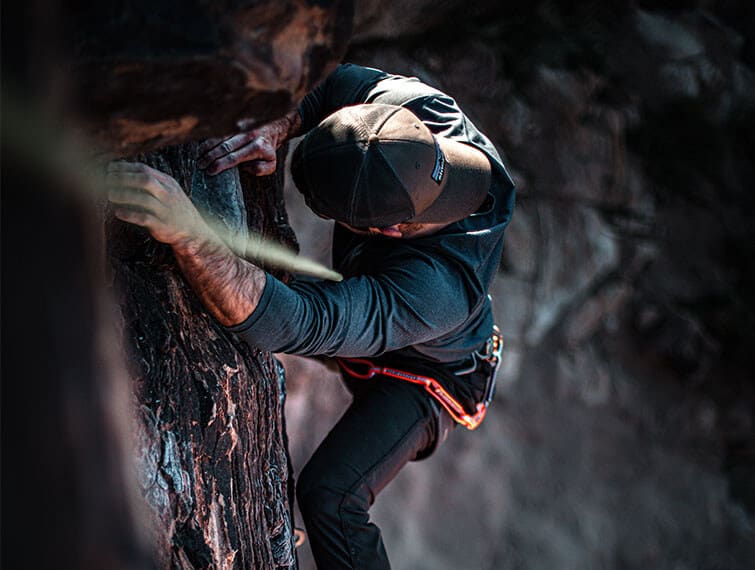
Learning to Rock Climb
This complex sport can also be expensive. You have to find the right trainers and buy the right gear to ensure your safety once you begin. Climbing gyms are a great way to introduce yourself to the basics of rock climbing, where you’d only need a harness and shoes you can buy or rent. You’d want to purchase your own equipment once you have decided to take the sport to another level.
Here are some considerations to think about when it comes to climbing for beginners:
Where are you going to climb?
Is it going to be indoor in a gym or outdoor? It won’t be hard to find climbing gyms. There are over 430 of these gyms in the US, proof that more people are getting interested about how to climbing techniques. The climbing revolution opened the sport to all genders, even though it started as a male dominated activity.
Fun Outdoor Quiz
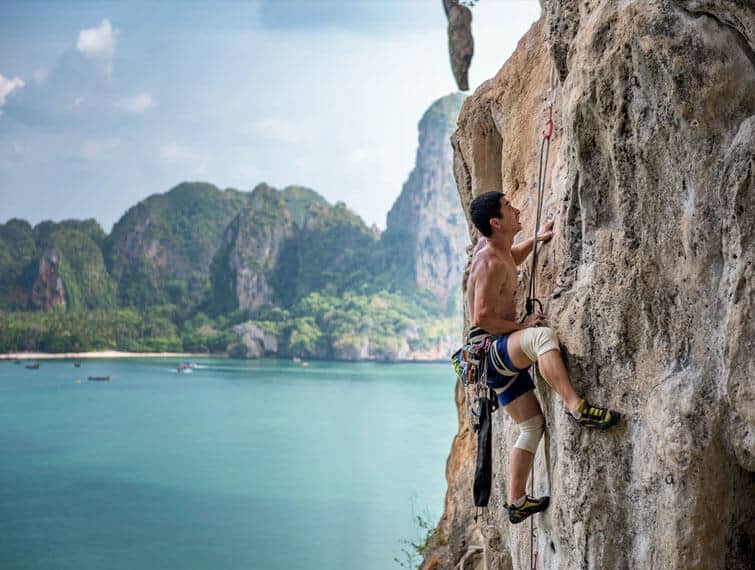
More people are trying out climbing indoors at gyms. Aside from being safer, they are also more easily accessible than outdoor climbing routes. For indoor climbing, you only to spend on your clothing, since harnesses and shoes can be rented. The cost of the passes at climbing gyms usually ranges from $6 to $30 per day. You can also avail a membership fee to maximize the cost if you’d be doing the sport often.
Outdoor climbing is usually done in mountains, cliff bands, boulders, or any places where there are good solid rock formations. The kind of rocks also affects the techniques applied on how to climb a rock wall. The most popular types of rock to climb include conglomerate blends, basalt, limestone, sandstone, and granite. Since there are more dangers waiting outdoors, you have to develop certain degree of expertise beyond your knowledge about the climbing basics. You will also need more gear outdoors and be aware of factors, including rock fall and weather conditions.
How to choose a climb?
One of the most important parts of a rock climbing tutorial is choosing a route or where you will climb. The choice will depend on your level of expertise. The climbs at gyms are labeled depending on the difficulty. Many of these routes have pre-setup top ropes.
The level of difficulty of outdoor climb routes can be measured through the use of guide books or phone applications, such as the Mountain Project. The rating used for these climbs is called the Yosemite Decimal System. A beginner climb has a rating of 5.3 and the expert-level route has 5.15 rating. When you are a beginner, you can choose climbs with a rating of 5.7 and below, most of which utilize the top rope system. Top roping refers to the system of climbing where an anchor is established at the top of the climb and the rope already in place beforehand.
Decide which type of rock climbing you’ll do.
The most basic climbing categories include trad or traditional climbing, sport climbing, and bouldering. You can choose to participate in all three, but it is recommended to familiarize yourself first with one category and become an expert on it before trying another. There are other types of climbing you can try as you get better in the sport. Each type poses different challenges and adventures.
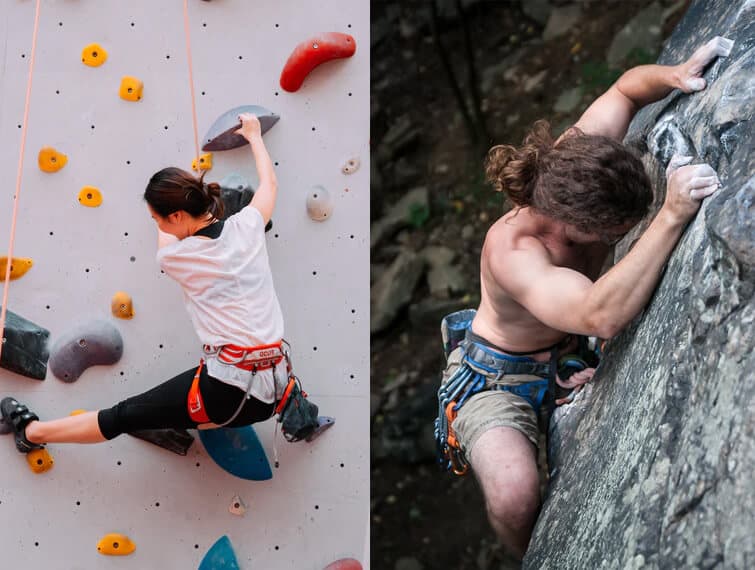
Learning the techniques
How to Rock Climbing – The Techniques
Here are the rock climbing basics you need to know to get acquainted with the sport:
- Your weight has to be kept on your skeleton. Keep your arms straight as much as possible when you are hanging from holds. This will give your muscles time to rest and they won’t hurt as much after you are done with the climb.
- Use your feet when you climb. Climbing can be very tiring, especially when you are putting too much of your weight on your upper body, including your arms. Your lower body is stronger than the upper part, so put your weight on your feet whenever the route doesn’t require you to shift it to your arms.
- The speed of climbing will naturally come as you get more acquainted with the sport. Do not hurry, especially when you are unfamiliar with the route. You might get hurt and wounded if you do so. An injury might further slow your progress, so take each step at a time. Be calm as you climb and never allow fear to overcome your emotions.
- Practice the art of breathing as you ascend. Many people who often do strenuous activities have experienced an Elvis leg at one point or another. It’s the uncontrollable shaking of the leg that happens when you’re tired or scared. It may also happen to climbers who don’t focus on their breathing as they climb. It comes as a result of the body’s lack of oxygen. It is important to focus on your breathing because it will boost your body’s oxygen supply and help your mind to focus and stay calm.
- Rest whenever you can during the climb. This is especially helpful on long routes. Whenever there’s a stance, drop an arm or two and shake them to release the tension buildup in your muscles.
- Always think positive. Boost your self-confidence as you climb. Tell yourself that you can do it no matter how hard it gets. Climbing is not only a physical activity but involves your mind as well.
This sport goes a long way than learning about the rock climbing basics. It will pay off to contribute to a positive and friendly atmosphere with the people around you. Never monopolize the route, especially at popular spots where there are many people rock climbing. Enjoy the process and make sure that you don’t litter as you climb and descend. Never leave a trace and pack everything up, including your litter, before calling it a day.



